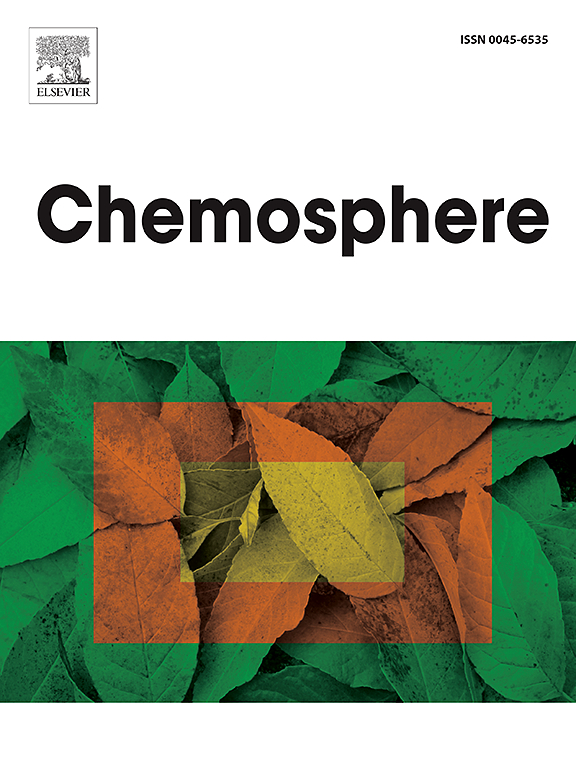Flood-borne pesticides are transferred from riparian soil via plants to phytophagous aphids
IF 8.1
2区 环境科学与生态学
Q1 ENVIRONMENTAL SCIENCES
引用次数: 0
Abstract
Surface waters are known to be polluted by a number of contaminants including synthetic pesticides. As flooding events intensify due to climate change, the flood-mediated transfer of pesticides to terrestrial ecosystems may also increase, potentially resulting in unforeseen exposure for terrestrial food-webs. To assess the uptake and trophic transfer of flood-mediated pesticide entries, we simulated riparian soil contamination caused by floodwater in a climate chamber pot experiment. The floodwater contained 31 fungicides and insecticides at environmentally relevant concentrations. We exposed potted stinging nettle plants (Urtica dioica) which were colonized by aphids to four sequential simulated flooding events and measured the pesticide concentrations in the soil, plant roots, plant stems and leaves, and aphids using HPLC-MS/MS. After four flooding events, the sum of insecticide and fungicide concentrations increased six-fold in soil and over thirty-fold in nettle plants compared to the concentrations after one flooding event. Bixafen and etofenprox showed the highest concentration in nettle leaves and stems, indicating bioaccumulation. After the four flooding events, thirteen pesticides were detected at concentrations up to 13.7 μg kg−1 in the phytophagous aphids with picoxystrobin, fipronil, trifloxystrobin, spiroxamine, and fluopyram showing biomagnification. This study shows that commonly applied pesticides can be transferred to riparian soils by flooding events, taken up by plants and biomagnify in herbivorous insects.

求助全文
约1分钟内获得全文
求助全文
来源期刊

Chemosphere
环境科学-环境科学
CiteScore
15.80
自引率
8.00%
发文量
4975
审稿时长
3.4 months
期刊介绍:
Chemosphere, being an international multidisciplinary journal, is dedicated to publishing original communications and review articles on chemicals in the environment. The scope covers a wide range of topics, including the identification, quantification, behavior, fate, toxicology, treatment, and remediation of chemicals in the bio-, hydro-, litho-, and atmosphere, ensuring the broad dissemination of research in this field.
 求助内容:
求助内容: 应助结果提醒方式:
应助结果提醒方式:


